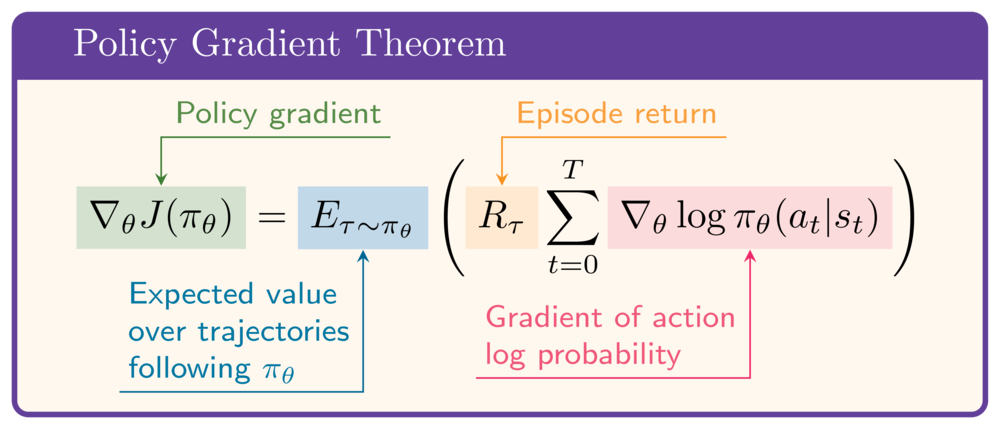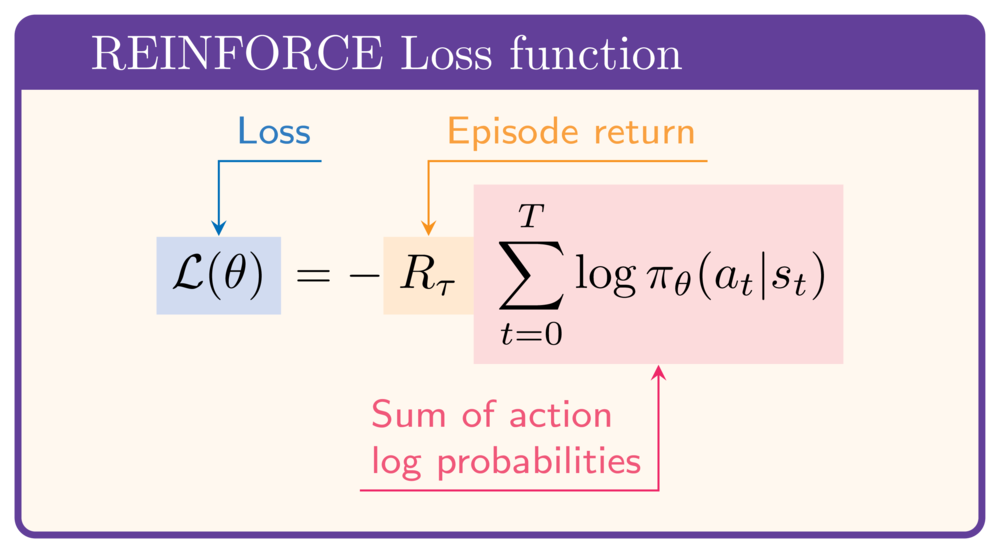Policy gradient and REINFORCE
Deep Reinforcement Learning in Python

Timothée Carayol
Principal Machine Learning Engineer, Komment
Differences with DQN
- REINFORCE: Monte-Carlo, not Temporal Difference
- Update at the end of the episode, not at every step
- Can update after several episodes instead
- No value function
- No target network
- No epsilon-greediness
- No experience replay

The REINFORCE training loop structure
for episode in range(num_episodes):# 1. Initialize episodewhile not done:# 2. Select action# 3. Play action and obtain next state and reward# 4. Add (discounted) reward to return# 5. Update state# 6. Calculate loss# 7. Update policy network by gradient descent
Action Selection
from torch.distributions import Categorical def select_action(policy_network, state): action_probs = policy_network(state)action_dist = Categorical(action_probs)action = action_dist.sample()log_prob = action_dist.log_prob(action)return action.item(), log_prob.reshape(1)action, log_prob = select_action( policy_network, state)
- Obtain probabilities from network
- Sample one action
- Return action and corresponding log probabilities
Sampled action index: 1
Log probability of sampled action: -1.38
Loss Calculation
Recall the policy gradient theorem:


In Python:
- $R_{\tau}$ as
episode_return - Vector of $\log\pi_\theta(a_t|s_t)$ as
episode_log_probs
loss = -episode_return * episode_log_probs.sum()
The REINFORCE training loop
for episode in range(50): state, info = env.reset(); done = False; step = 0; episode_log_probs = torch.tensor([])R = 0while not done: step += 1 action, log_prob = select_action(policy_network, state)next_state, reward, terminated, truncated, _ = env.step(action) done = terminated or truncatedR += (gamma ** step) * rewardepisode_log_probs = torch.cat((episode_log_probs, log_prob))state = next_stateloss = - R * episode_log_probs.sum()optimizer.zero_grad(); loss.backward(); optimizer.step()
Let's practice!
Deep Reinforcement Learning in Python

